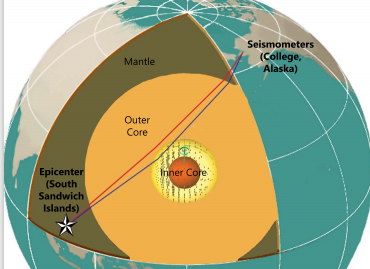The fast evolution of animals 540 million years ago transformed the Earth forever - down into its lower mantle. In rocks from this zone, a team led by ETH researcher Andrea Giuliani discovered indications of this evolution.
What's Happening Below?

Actions deep within the Earth's interior impact what happens on the surface. Volcanoes, for example, excavate magmatic rocks and spew gases into the atmosphere, influencing our planet's biogeochemical cycles.
What is less clear, however, is that what happens on the Earth's surface impacts the Earth's interior, even at tremendous depths. In a recent study published at the journal Science Advances, an international group of researchers led by Andrea Giuliani, SNSF Ambizione Fellow in the Department of Earth Sciences at ETH Zurich, came to this result
The emergence of life on our planet, according to this study, has an impact on areas of the Earth's lower mantle.
Looking at Kimberlites
The researchers looked at kimberlites, which are unusual diamond-bearing volcanic rocks from various periods of Earth's history. These unusual rocks are messages from the Earth's mantle's deepest layers. Scientists analyzed carbon isotope composition in roughly 150 samples of these unique rocks.
They discovered that the design of younger kimberlites (less than 250 million years old) differs significantly from older rocks. The carbon isotope composition in several of the younger samples is beyond the range that would be predicted for mantle rocks.
According to the researchers, the Cambrian Explosion was a significant catalyst for the shift in the composition of younger kimberlites. This geologically brief time occurred at the beginning of the Cambrian Epoch, around 540 million years ago, and lasted a few tens of millions of years.
During this dramatic change, almost all of today's animal groups made their initial appearance on Earth. "What was happening on the Earth's surface was significantly affected by the massive expansion in living forms in the waters," Giuliani argues. "As a result, the composition of sediments at the ocean's bottom changed."
Key Transition

This transition is vital for the Earth's lower mantle because some of the sediments on the seabed, which contain material from deceased living species, reach the mantle through plate tectonics. Together with the underlying oceanic crust, these sediments are carried to considerable depths along subduction zones. Carbon deposited as organic material in the sediments enters the Earth's mantle in this way. The sediments combine with other rock material from the Earth's mantle and rise to the Earth's surface in other areas after a period of time, believed to be between 200 and 300 million years, in the form of kimberlite magmas, for example.
Because very modest volumes of material are carried into the depths of the mantle along a subduction zone, it's surprising that changes in marine sediments leave such deep remains. "This demonstrates that subducted rock material in the Earth's mantle is not spread uniformly, but rather follows unique paths," Giuliani says.
The researchers looked at the isotopic makeup of other chemical elements in addition to carbon. Strontium and hafnium, for example, have a pattern that is comparable to carbon. "This indicates that other processes like degassing cannot explain the carbon signal," Giuliani explains, "Since otherwise the isotopes of strontium and hafnium would not be associated with those of carbon."
Paving the way for More Research
The latest findings pave the way for more research. For example, elements such as phosphorus and zinc, which were dramatically influenced by the development of life, might reveal how events at the Earth's surface influence the Earth's core. "The Earth is a very sophisticated overall system," adds Giuliani. "And now we'd want to learn more about this system."
Read also: Long Valley Supervolcano: World's Most Dangerous Volcano Shows Signs of 'Imminent Eruption'
For similar news, don't forget to follow Nature World News!
© 2025 NatureWorldNews.com All rights reserved. Do not reproduce without permission.





